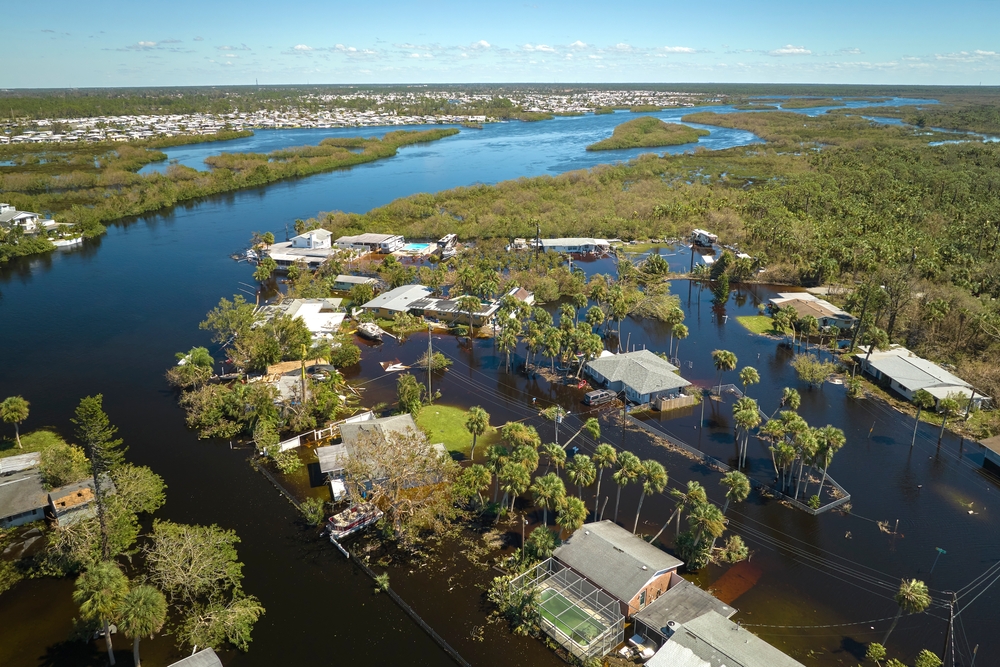Uninsured Flooding from Hurricane Ian was a Nightmare for Florida Homeowners

Hurricane Ian caused massive damage when it came ashore in southern Florida. One of the most damaging features of Ian was the storm surge which left behind tons of mud, water, muck, and mold where water rushed into homes.
Unfortunately, many Floridians are not carrying a separate flood insurance policy to help cover the cost of the damage done by the storm surge. This means that many homeowners in the path of Ian may be facing life-changing expenses related to their flooded or destroyed homes.
One example of how powerful Ian was and the damage it did is Sanibel Island. This small coastal community took a direct hit from the Category 4 storm and the storm surge hit 15 feet in some places, flooding homes and even destroying the causeway to Sanibel making the island inaccessible by car.
Numerous homeowners in Sanibel lack flood insurance. In fact, only 18.5% of homes in Florida counties where mandatory or voluntary evacuation orders were issued have a flood insurance policy with the National Flood Insurance Program (NFIP). The NFIP is the federal flood insurance program that is run by FEMA.
As the risk of flooding increases due to climate change fewer homeowners are carrying flood insurance. According to FEMA data, the number of NFIP policies in force has declined by nearly 700,000 since 2008.
“There are many factors that influence this drop in policyholders, including the economic impact of the pandemic, the housing market, affordability, or purchasing flood insurance from the private market,” David Maurstad, the senior executive of the National Flood Insurance Program, said in a recent statement.
Currently, there are roughly 5 million flood insurance policies in force with the National Flood Insurance Program. The NFIP has been underwater financially for years and owes about $20 billion to the U.S. Treasury due to borrowing funds to pay out claims.
While FEMA has made an effort to entice homeowners to purchase flood insurance, they have not always been successful. FEMA has even refused aid to those who received funds from the federal agency for flooding in the past but did not put flood insurance in place since their last flooding event.
“I think anybody who lives near water should certainly purchase flood insurance because it’s your No. 1 tool to help protect your family and your home after the storm,” FEMA administrator Deanne Criswell told CNN last week.
Standard Homeowners Policies Exclude Flood Damage
Despite warnings by the state, many homeowners seem to be unaware that a standard homeowners insurance policy always excludes flood damage.
In fact, Florida requires that insurance companies must include in at least 18-point bold font four sentences that warn policyholders that a separate flood policy is necessary. “Your homeowner’s insurance policy does not include coverage for damage resulting from a flood even if hurricane winds and rain caused the flood to occur,” the text states.
In addition to not understanding that flood damage is excluded from homeowners coverage, affordability is another reason homeowners cite for not carrying flood insurance. According to the NFIP, the average cost of flood insurance is $985 a year.
This number can obviously fluctuate depending on the risk factors of your home as well as your personal risk factors. While mortgage companies require flood insurance if your home is located in a high-risk flood area, many homeowners allowed this coverage to lapse as premiums have increased.
Homeowners that own their houses outright are not required to carry flood insurance and will need to cover all of the costs related to flood damage if they were not carrying a flood policy.
Leslie Weyhrich, who was recently featured in an NBC News article said that she and her husband cut back on insurance coverage for their Sanibel Island second home in May after 15 years of having flood insurance. They decided to drop their flood coverage as the cost went up every year
“It went up significantly, maybe about five or six years ago,” said Weyhrich in the recent NBC News article. “But every year that bill came due, we discussed whether it was worth it or not because the deductibles were so high, it didn’t cover as much as it used to and it just made less fiscal sense.”
Unfortunately, the Weyhrichs will now be on the hook for the cost of the flood damage to their home as are many other homeowners on Sanibel and other areas of Florida hit by Ian.
“Half the people I’ve talked to on this island are uninsured for flooding and that is absolutely terrifying,” said Chuck Bergstrom, a realtor on Sanibel Island, in the recent NBC New article. “And whether you have it or not, these insurance companies aren’t here to help these folks right now. They’ll negotiate as hard as they can.”
Even homeowners who are carrying flood insurance are more than likely in for a battle with their insurers arguing over whether the damage to their home was caused by Hurricane Ian’s wind or flooding.
